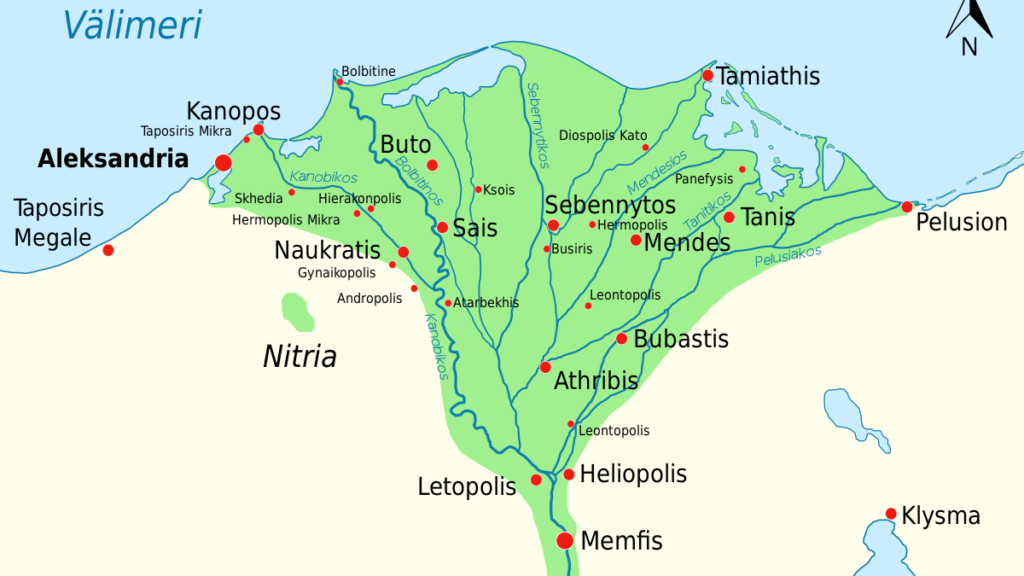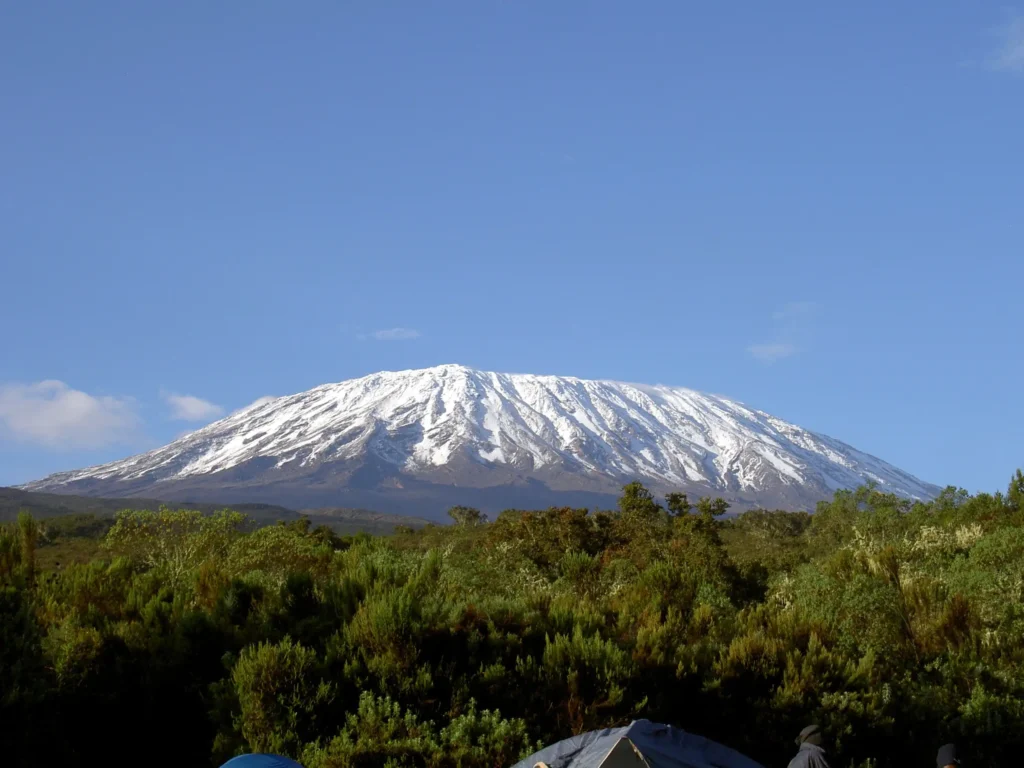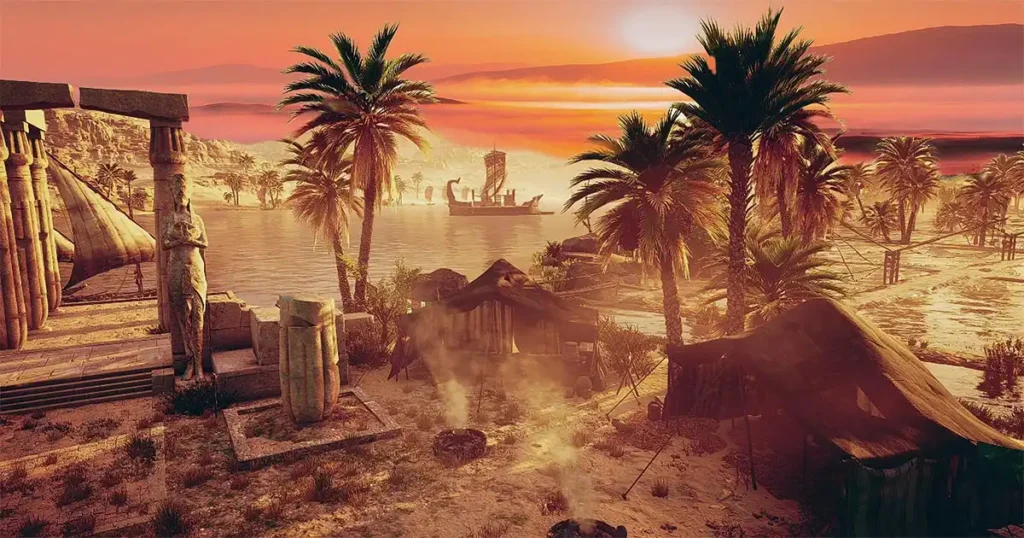The Nile was once considered one of the most important rivers in the world. It’s long been considered an important resource for human civilization, providing water for agriculture as well as providing transportation routes across Africa.
The Nile has played a key role in human history, from providing water to ancient Egyptians who relied on its annual flooding to build their cities and keep them alive during dry periods.
Today the river is still very much an important part of life in Egypt where many people depend on it for drinking water, irrigation, and transportation.
In this article, we have covered 10 interesting facts about the Nile River.
10 Interesting Facts About the Nile River
Fact #1: The Nile is one of the longest rivers in the world
The Nile River is one of the longest rivers in the world, traversing 6,695 kilometers (4,160 miles) over 11 countries in Africa.
It begins at Lake Tana in Ethiopia and ends at its delta on Egypt’s Mediterranean coast.
The Nile has been vital to human civilization for thousands of years—from ancient Egyptians to European explorers who used it as a trade route and source of drinking water.
The river’s importance has only increased over time as more people depend on it for food production or recreation like fishing or swimming.
Fact #2: The Nile has two main tributaries
The Nile has two main tributaries; the White Nile, which starts in Burundi and is fed by the Kagera River in Tanzania, and the Blue Nile which starts in Ethiopia and begins at Lake Tana.
The White Nile flows into Sudan before meeting with its counterpart, the Blue Nile at Khartoum. This confluence forms what is known as “the Great Bend” where they join together to create one large river system called “The River Nile”.
Fact #3: The shape of Nile’s delta

The Nile’s delta is shaped like a triangle and covers more than 200,000 square miles (518,000 square kilometers), making it one of the biggest deltas on Earth.
The Nile Delta is known as “The Garden of Egypt” because of its rich soil that was once covered in fields and gardens.
Fact #4: The Nile Delta is one of the biggest deltas
The Nile Delta is one of the biggest deltas on Earth, but it’s also one of the most fascinating. It’s so big that ships can sail from ports like Alexandria straight up into the river without having to stop at any ports along their journey.
This is because there are no other streams or rivers that flow into this part of Egypt—only one, which means you have to go all the way around Africa before coming back home again!
Fact #5: The river gets its name from the Greek word “Neilos”
The Nile gets its name from the Greek word “Neilos,” meaning “Valley”.
The river was first discovered by the ancient Egyptians, who named it after their god of fertility and fertility.
In fact, the upper reaches of this mighty waterway were one of several places where they believed that people could become pregnant with gods (the other being Lake Victoria).
Fact #6: It was once thought that the source of the Nile River was Mount Kilimanjaro

One of the most interesting facts about the Nile River is that it has been thought to have its source in Mount Kilimanjaro.
The blue part of this mountain, which forms part of Tanzania’s Great Rift Valley, was once considered to be its origin.
But scientists now know that Lake Victoria and Lake Tana, both in Uganda (the country where Mount Kilimanjaro is located), are actually responsible for getting water into these two lakes which then flow into each other through an underground channel called “The Rift.”
So if you’re going on vacation near Mount Kilimanjaro or want to see some great wildlife while visiting Africa—or if you just want something new to try out on your next trip—make sure not to miss out on seeing one or both of these beautiful bodies of water!
Fact #7: Lake Victoria feeds into both ends of Lake Albert.
The Kazinga Channel connects Lake Victoria to Lake Albert, the second-largest freshwater lake in Africa. While it’s not a well-known fact that both ends of this channel are fed by Lake Victoria, it’s an important one because it helps keep the water levels of each lake stable.
In addition to being fed by these two lakes and their associated channels, Lake Albert also receives water from the Rift Valley Lakes via the Olenik River (which empties into Lake Turkana).
With such a large amount of freshwater flowing through its ecosystem, you might think that this is one big body of water—but you’d be wrong!
Fact #8: Lake Nasser is considered to be one of the largest man-made lakes
The Nile River is one of the longest rivers in Africa. It’s also one of the oldest, having been formed by the erosion of an ancient lakebed that existed before it was dammed up and flooded by Aswan Dam.
At 6,650 feet (2 kilometers) long and 20 feet (6 meters) deep Lake Nasser, built behind the Aswan High Dam is considered to be one of the largest man-made lakes in history. It’s still a popular destination for tourists today because it offers great fishing opportunities as well as scenic views from its shoreline.
Fact #9: The annual flooding of the Nile Valley was an extremely important event
The annual flooding of the Nile Valley was an extremely important event for ancient Egypt, allowing them to grow crops during otherwise unused floodwater periods.
The flooding of the Nile marked a time of celebration when it was believed that their gods had blessed them with plentiful harvests and prosperity.
This belief was so strong that even after millennia of human development, many Egyptians still believe today that if they perform rituals correctly, then they will receive blessings from their gods and have good luck in all endeavors. Even if those endeavors are far removed from traditional farming or animal husbandry!
Fact #10: River Nile was sacred to ancient Egyptians

The Nile was a major source of life for ancient Egyptians. The powerful river was believed to have been created by the gods, and its waters were seen as vital for sustenance, worship, and healing.
You may also like:
Conclusion
We hope this article “facts about the Nile River” gave you some insight into the Nile River and its history in Africa.
We know that many people have heard of the incredible river, but don’t always have time to explore its true depths.
This information should help you become more informed about this fascinating part of human history!



